
Pairing Tanacetums
5 inspirational ideas for your garden
Contents
Tanacetum, also known as Pyrethrums, are beautiful perennials that are both decorative and aromatic. Indeed, tansy is known among gardeners for its naturally repellent properties that deter harmful insects. Additionally, this lovely wild plant is also renowned for its fungicidal action against downy mildew and rust. Not only is this perennial useful in the vegetable garden, but it is also stunning in a natural, romantic garden or in a pot. It offers a long summer flowering period with yellow flowers in Tansy vulgare or pink flowers with a golden heart in Tansy coccineum. It is also distinguished by its beautiful, finely cut, aromatic foliage.
Easy to grow and hardy, Pyrethrums thrive in well-drained, poor, stony, sandy, and even dry soil. If it is happy in your garden, you may sometimes need to curb its desire to spread. It is also said to have medicinal and digestive virtues.
Discover five inspirational ideas for pairing Tansy and use our app Plantfit to check which ones are best suited to your garden.
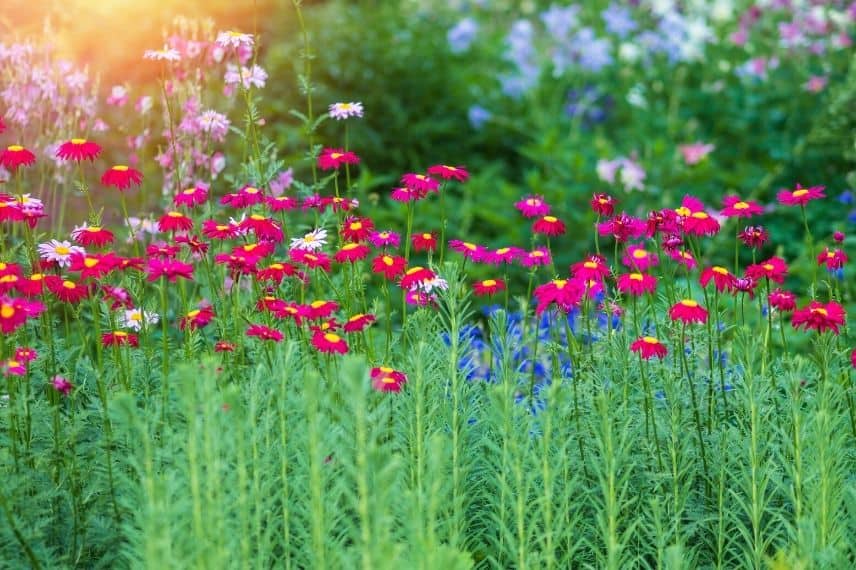
Tanacetum ‘Robinson’s Red’ and its beautiful raspberry-red flowers in a country garden
In a vegetable garden
Tansy is known to gardeners for its lovely flowers that attract beneficial pollinators, but also for its lemony and repellent scent that keeps harmful insects at bay, such as cabbage flies and Colorado potato beetles. Thus, one should plant Tanacetum vulgare or Tanacetum vulgare ‘Isla Gold’ among Cabbages, Carrots, or Onions to protect them. One can also sow seeds of common tansy near sowings of peas, salad, beans, and close to strawberries. Tansy is also used at the base of vines, where it is reputed to reduce the reproduction of the Eudémis of the vine, also known as the ‘grape worm’. The flowers of tansy are also used to prepare a manure that is said to have anti-fungal properties, as well as to combat downy mildew and rust, which is very useful in an organic vegetable garden. One can also plant Tanacetum balsamita, known as ‘Mint coq’, primarily used for making liqueur.
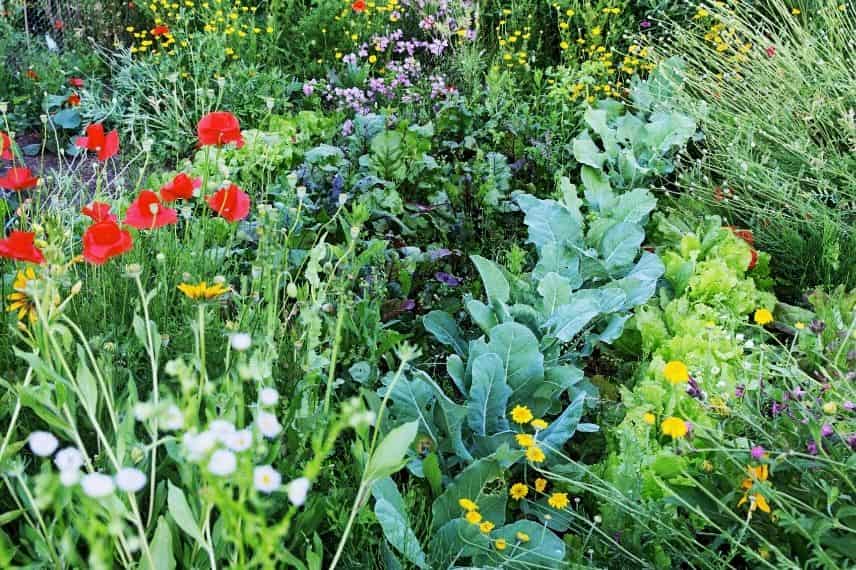
Tansy will thrive in the vegetable garden alongside other flowers
Read also
How to make tansy manure?In an aromatic garden
Once, tansy was recognised as a medicinal plant, particularly as a vermifuge. In the Middle Ages, Tanicetum Vulgare was attributed with digestive properties. Today, tansy is renowned for its aromatic scent and is primarily used for its repellent action against certain harmful insects such as mosquitoes, moths, fleas, bedbugs, and some mites.
In an aromatic garden, you can plant it near Lemon Balm, St John’s Wort, or Mint. You can also plant Tanacetum balsamita, known as ‘Pineapple Mint’, which is also used in the preparation of liqueurs, alongside Wormwood, Chamomile, and Vervain. You can also give it a place in a spiral of aromatics, near a young plant of Thyme, Oregano, Parsley, Basil, and Rosemary.

Pineapple Mint (Tanacetum balsamita), Pineapple Mint, Chamomile, and Lemon Thyme
Discover other Tanacetum - Tansy
View all →Available in 1 sizes
Available in 1 sizes
Available in 2 sizes
Available in 1 sizes
Available in 1 sizes
Available in 1 sizes
Available in 1 sizes
Available in 1 sizes
Available in 1 sizes
In a natural garden
With its rustic and wild charm, Tansy is the perfect candidate for a natural garden, thriving in full sun or light shade. Hardy and very vigorous, these beautiful flowers, cousins of the daisies, require little maintenance. They can be paired with other lovely wild perennials such as Astilbe, Echinaceas, Centaureas, Chamomile, Rodgersia, meadowsweet, Yarrow, and Filipendula. For a beautiful natural effect, also plant some grasses: a Calamagrostis or Stipa. You can also sow some annual plants like Marigolds, Cosmos, Chervil, or a biennial Viper’s Bugloss.
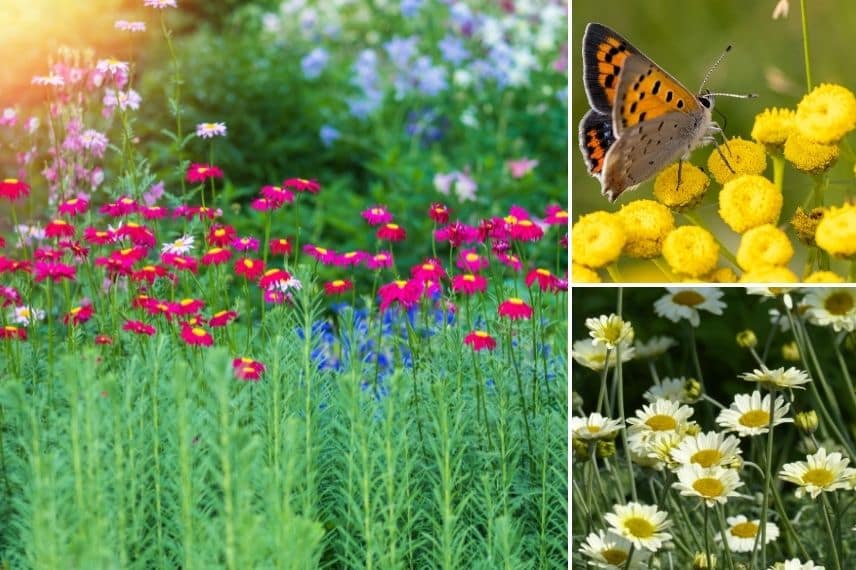
Tanacetum ‘Robinson’s Red’, Tanacetum vulgare ‘Isla Gold’ and Chamomile
In a pot
Tansy is renowned for its great hardiness, as well as for its very easy cultivation, which can sometimes make it invasive. It is interesting to grow it in a pot if you want to limit its natural spread. Moreover, it will thrive easily in a container and will beautifully decorate a terrace or balcony. You might choose Tanacetum vulgare ‘Isla Gold’ for its golden inflorescences, resembling little suns, and its golden foliage that will bring light to a terrace. The Pyrethrum ‘Robinson Rose’ will also be interesting for its pale pink flowers that resemble daisies. The variety ‘Robinson’s Red’ will not go unnoticed with its beautiful bright red flowers and golden centre. Tansy can be planted solitarily or alongside Grasses, Lady’s Mantle, Sage, a Perennial Echinacea, and Agastache.
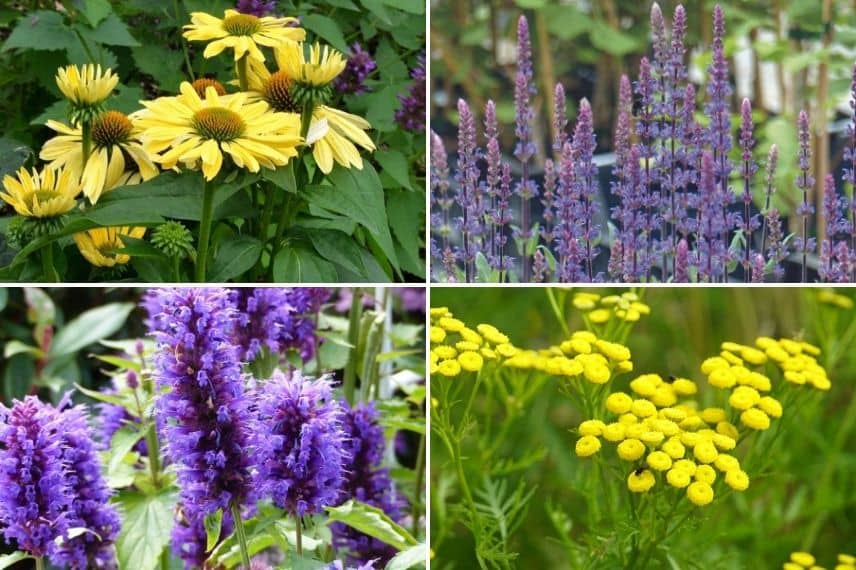
An Echinacea, a Sage, an Agastache, and a Tanacetum vulgare ‘Isla Gold’
In a romantic garden
In a romantic garden, you can plant a Tanacetum with pale pink flowers, such as the stunning cultivar ‘Robinson Rose’, which will bring a touch of softness. The Pyrethrum ‘Robinson’s Red’ will add a whimsical touch with its intense raspberry-red petals and golden centre. For a poetic atmosphere, pair them with Astrantias, a Gypsophila with airy flowering, a peony, and a garden Chrysanthemum or an Aster to extend the flowering season. For a perfect scene, place some beautiful roses in shades of pink and white at the back of the border.
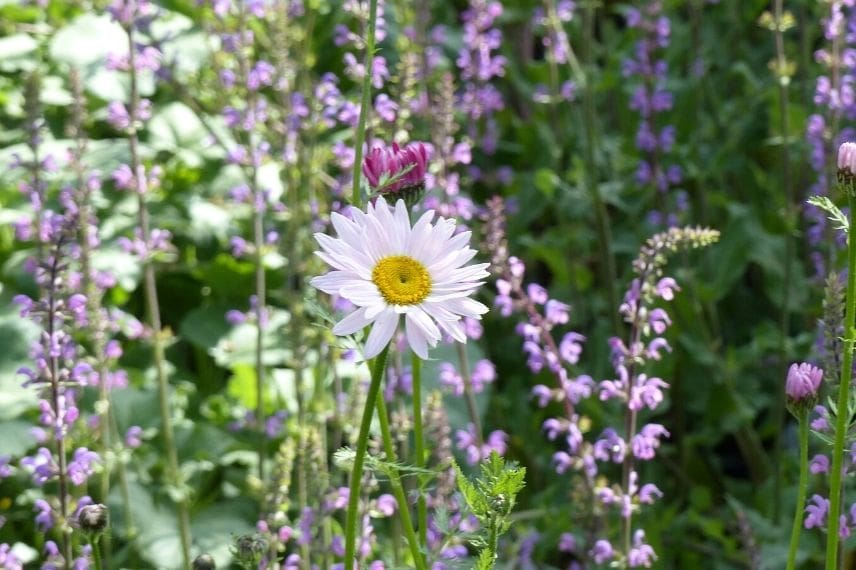
Tanacetum ‘Robinson Rose’
For further reading
- Discover all our varieties of Tanacetum to adopt in the garden
- To learn everything about Pyrethrum, read our sheet: Tansy: sowing, planting and growing
- Subscribe!
- Contents


































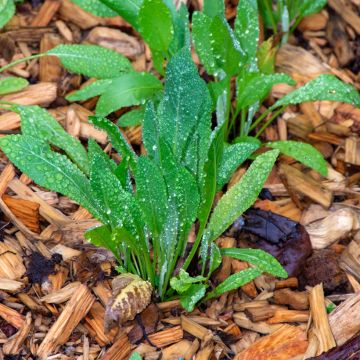
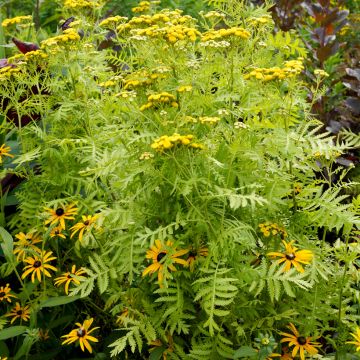

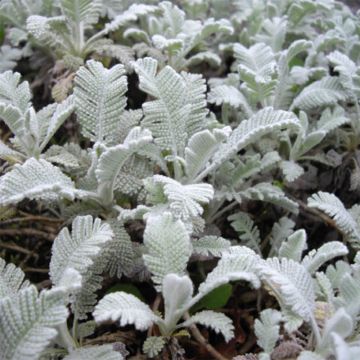

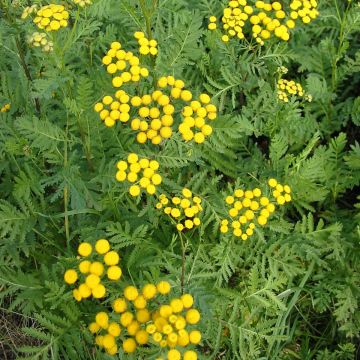
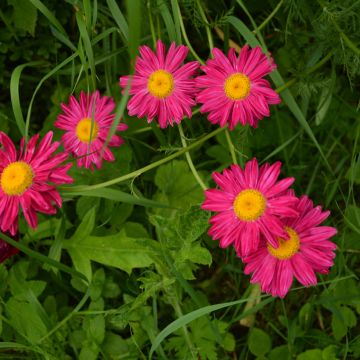
Comments